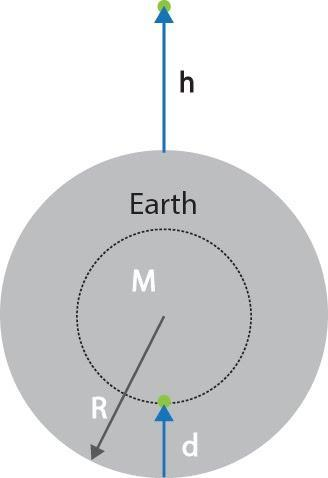Question
Question: Discuss the variation in \(g\) with (a). Altitude (b). Depth...
Discuss the variation in g with
(a). Altitude
(b). Depth
Solution
- Hint: Apply Shell’s theorem which states that a spherically symmetric object affects other objects gravitationally as if all of its mass were concentrated at its centre. Different points, above and inside earth are considered and variation in g is deduced.
Complete step-by-step solution -
Earth can be considered as a uniform sphere of mass M and radius R. Where the Gravitational constant is given as G. We know that on the surface of Earth acceleration due to gravity is
g=R2GM
We now apply shell’s theorem. Shell’s theorem states that a spherically symmetric object affects other objects gravitationally as if all of its mass were concentrated at its centre. Consider Earth as the shell.

Part(a) Altitude
Let the point be taken at a height h above the earth’s surface. Applying the shell’s theorem for the figure we can write the acceleration due to gravity at that point as
g′=r2GM=(R+h)2GM
The relation clearly shows that with an increase in height the acceleration due to gravity decreases.
Part(b) Depth
Let the point be taken at a depth d below the earth’s surface. Applying the shell’s theorem for the figure we can observe that only the mass which lies inside the sphere of radius R-d is responsible for the acceleration due to gravity at that point.
